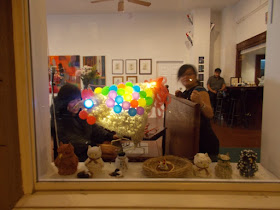.
The video above was a commercial for Banco Sabadell and, given that it's been seen over eight and a half million times on Youtube, it's entirely possible that you're already familiar with it. But what the heck. Beethoven never grows old.
And . . .
Marianne pointed out that "The Dog Said Hello" made it onto Locus Online's shortlist of the best stories of the Twenty-First Century. Which, given that the century is only thirteen years old, was easier to make it onto than the Twentieth Century shortlist. Just check out its first ten stories:
- Arthur C. Clarke, “The Nine Billion Names of God” (1953)
- Ursula K. Le Guin, “The Ones Who Walk Away from Omelas” (1973)
- Harlan Ellison, “‘Repent, Harlequin!’ said the Ticktockman” (1965)
- Harlan Ellison, “I Have No Mouth, and I Must Scream” (1967)
- Arthur C. Clarke, “The Star” (1955)
- Ray Bradbury, “A Sound of Thunder” (1952)
- Robert A. Heinlein, “All You Zombies— ”(1959)
- William Gibson, “Johnny Mnemonic” (1981)
- James, Jr. Tiptree, “The Screwfly Solution” (1977)
- Shirley Jackson, “The Lottery” (1948)
Here's the Twenty-First Century shortlist, courtesy of Tor.com. The original posting had me tied with Ursula K. Le Guin. Me! Le Guin! Dead even! I bet you can imagine how elated that makes me feel.
- Ted Chiang, “Exhalation” (2008)
- Margo Lanagan, “Singing My Sister Down” (2004)
- Neil Gaiman, “How to Talk to Girls at Parties” (2006)
- Peter Watts, “The Things” (2010)
- Michael Swanwick, “The Dog Said Bow-Wow” (2001)
- Ursula K. Le Guin, “The Bones of the Earth” (2001)
- Kij Johnson, “26 Monkeys, Also the Abyss”
- Daniel Abraham, “The Cambist and Lord Iron” (2007)
- Kij Johnson, “Spar” (2009)
- Alastair Reynolds, “Zima Blue” (2005)
The list can be found here.
The very, very, very long list, for those who really want to wonk out, can be found here.
*









































